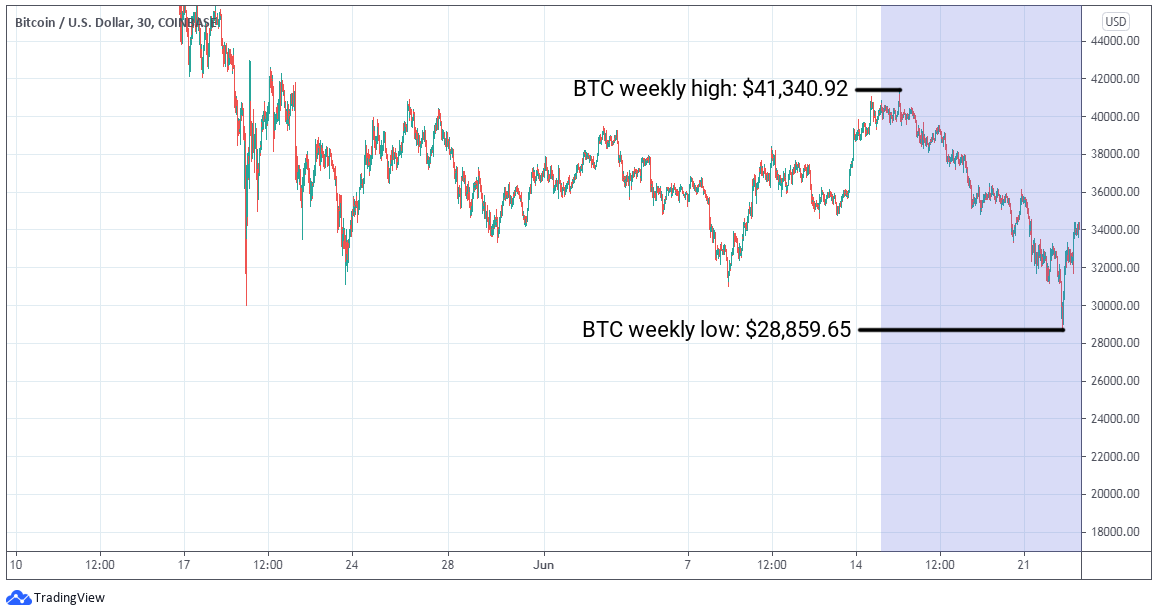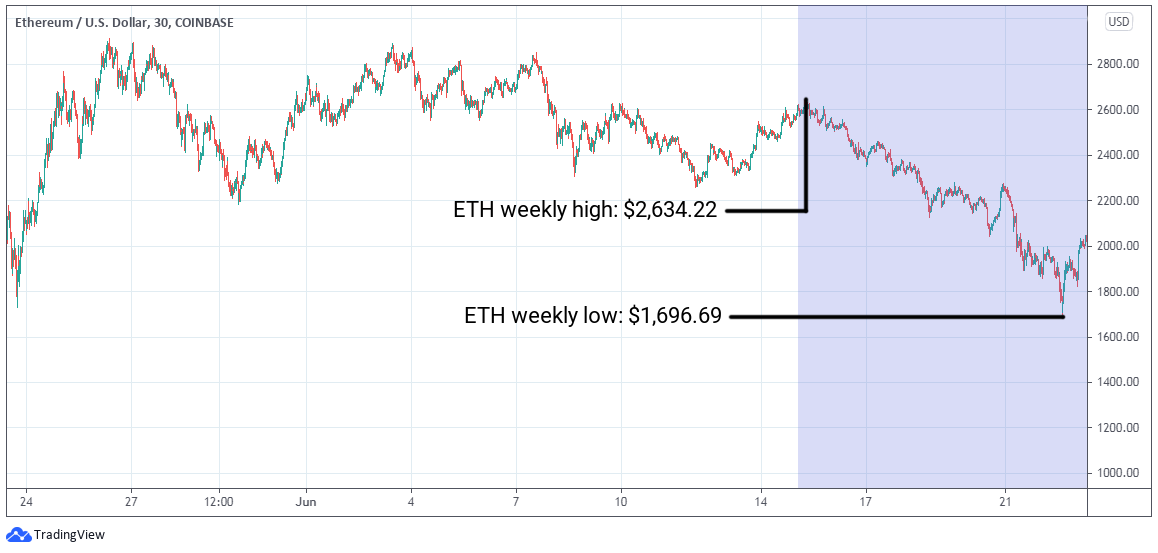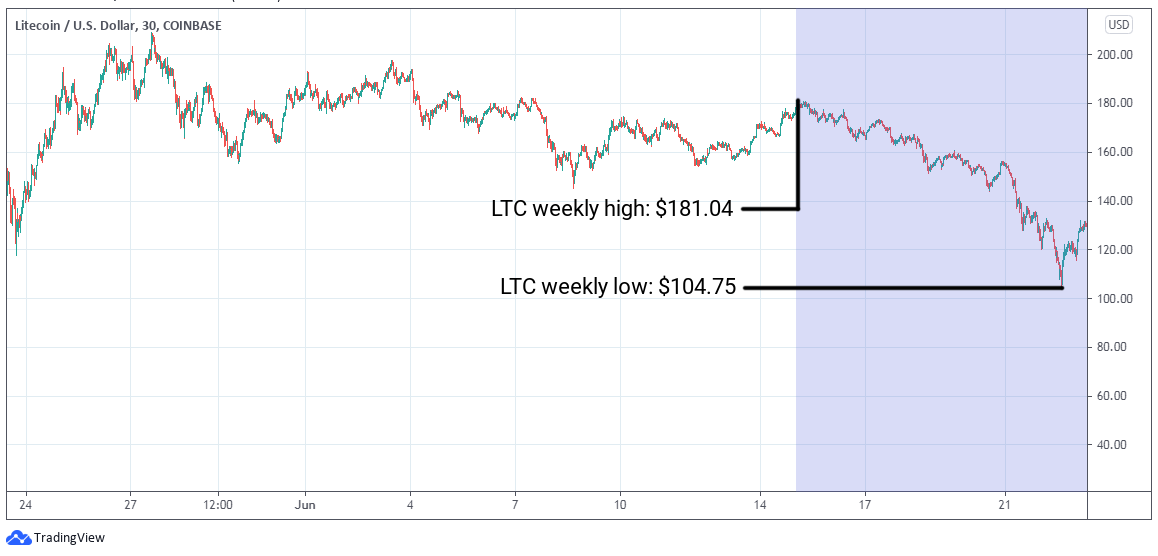ETC Group Crypto Minutes Week #25
The de-Chinafication of Bitcoin: Cryptomining migration begins
The de-Chinafication of Bitcoin: Cryptomining migration begins

China’s continuing crypto crackdown commanded most of the newsflow throughout the week and dictated the markets. It’s the only story really worth considering in this week’s Crypto Minutes, for its wide-reaching ramifications.
In May China’s political cabinet ignited a campaign to crack down on mining and cryptocurrency trading, ostensibly to control risks to its population. The People’s Bank of China, the country’s de-facto central bank, said this week it had called upon big banks and payment processors, including Alibaba (NYSE:BABA) subsidiary Alipay, and state-owned lenders like the Agricultural Bank of China, the Postal Savings Bank of China and the Industrial and Commercial Bank of China.
Speculative trading in virtual currencies roils economic and financial order, spawns the risks of criminal activities such as illegal asset transfers and money laundering, and endangers people’s wealth. People’s Bank of China, 21 June
China cannot control Bitcoin. And that is perhaps why the notoriously authoritarian state is redoubling efforts to extricate itself from its crypto dominance. China has the perfect surveillance technology coming in the form of the e-CNY, the country’s Central Bank Digital Currency. All of its citizen’s purchases tracked, everywhere they go.
As of April 2020, an approximate 65% of Bitcoin hashrate — the computing power used to generate new bitcoins, confirm transactions and secure the network — was concentrated in China.
Those numbers are shifting daily as Bitcoin miners now flee China in ever increasing numbers.
All signals seem to be indicating the greatest shakeup in the geographic makeup of bitcoin mining since the start of the industrial mining era. Nic Carter, CoinMetrics co-founder, 22 June
BIT Mining (NYSE:BTCM) has delivered its first batch of 320 mining machines to Kazakhstan, Coindesk reports, with plans to move two more tranches totalling 2,600 machines by July. The company’s Sichuan operations were effectively shut down on 19 June when it received notice that the state energy regulator would cut off its electricity supply. Guangzhou’s Fengua International also told CNBC on 21 June it was airlifting 3,000kg of mining machines to Maryland.
Authorities in the southwestern Chinese province ordered a halt to crypto mining, according to a report from the Communist Party-backed newspaper Global Times. More than 90% of China’s bitcoin mining capacity is estimated to be shut down, the paper said.
One of the more interesting points to come out of this is how malleable the Bitcoin mining network is. What other industry could simply break down its operations and move them across the world in a matter of days?
Could Google’s parent company Alphabet (NASDAQ:GOOGL) pick up its server farms and deposit them in a more energy efficient place overnight? Unlikely.
As CNBC reports , Texas could be one of the biggest winners from the great cryptomining migration.
Texas often has some of the world’s lowest energy prices, and its share of renewables is growing over time, with 20% of its power coming from wind as of 2019. It has a deregulated power grid that lets customers choose between power providers, and crucially, its political leaders are very pro-crypto – dream conditions for a miner looking for a kind welcome and cheap energy sources. MacKenzie Sigalos, CNBC, 15 June
Bitcoin mining pools located outside of China — like Foundry USA — are expected to be among the biggest winners of China’s policy shift.
So while in the near-term, crypto markets are taking this unprecedented uncertainty rather badly, it does mean a reconfiguration of crypto power back into the hands of the West.
A more transparent future for Bitcoin and cryptoasset markets beckons. And the ability to say definitively that cryptomining is being undertaken with more renewable energy? Surely that will be a positive for those who can look beyond the immediate market drop.
BTC/USD
Throughout the week Bitcoin prices dropped back to where they were in late January, sliding 30.1% from a high above $41,000 under $29,000. By Tuesday, BTC was struggling to hold on to $30,000 with a significant area of support in the $29,000 region. But as soon as pundits were calling a bear market, Bitcoin rallied 18% back up into the $34,000 region, with resilience the watchword of the week.

ETH/USD
Ether too was roiled by retail uncertainty, with Ethereum’s base currency falling well below the $2,000-mark it first captured in February 2021. The fundamentals of ETH continue to impress, with DeFi total value locked still rising, but spot prices showed weakness throughout out the week, shedding 35% from a high of $2,634.22 to to hit $1696.69, a two- month low. By Wednesday morning it had rebounded 20.4% with lower values below $2,000 clearly rejected.

LTC/USD
The start of the week at $181.04 was the best it got for Litecoin, as the popular payments protocol suffered a 42.1% capitulation from its peak to its zenith. Those intraday lows were numbers not seen since the bull run of late December 2020, piquing interest in the potential for a Litecoin bear market. There were brighter signs for LTC against the dollar, though, as it bounced back 25.7% to end the week at $131.77.

Important information:
This article does not constitute investment advice, nor does it constitute an offer or solicitation to buy financial products. This article is for general informational purposes only, and there is no explicit or implicit assurance or guarantee regarding the fairness, accuracy, completeness, or correctness of this article or the opinions contained therein. It is advised not to rely on the fairness, accuracy, completeness, or correctness of this article or the opinions contained therein. Please note that this article is neither investment advice nor an offer or solicitation to acquire financial products or cryptocurrencies.
Before investing in crypto ETPs, potentional investors should consider the following:
Potential investors should seek independent advice and consider relevant information contained in the base prospectus and the final terms for the ETPs, especially the risk factors mentioned therein. The invested capital is at risk, and losses up to the amount invested are possible. The product is subject to inherent counterparty risk with respect to the issuer of the ETPs and may incur losses up to a total loss if the issuer fails to fulfill its contractual obligations. The legal structure of ETPs is equivalent to that of a debt security. ETPs are treated like other securities.
Bitwise is one of the world’s leading crypto specialist asset managers. Thousands of financial advisors, family offices, and institutional investors across the globe have partnered with us to understand and access the opportunities in crypto. Since 2017, Bitwise has established a track record of excellence managing a broad suite of index and active solutions across ETPs, separately managed accounts, private funds, and hedge fund strategies—spanning both the U.S. and Europe.
In Europe, for the past four years Bitwise (previously ETC Group) has developed an extensive and innovative suite of crypto ETPs, including Europe’s largest and most liquid bitcoin ETP.
This family of crypto ETPs is domiciled in Germany and approved by BaFin. We exclusively partner with reputable entities from the traditional financial industry, ensuring that 100% of the assets are securely stored offline (cold storage) through regulated custodians.
Our European products comprise a collection of carefully designed financial instruments that seamlessly integrate into any professional portfolio, providing comprehensive exposure to crypto as an asset class. Access is straightforward via major European stock exchanges, with primary listings on Xetra, the most liquid exchange for ETF trading in Europe.
Retail investors benefit from easy access through numerous DIY/online brokers, coupled with our robust and secure physical ETP structure, which includes a redemption feature.